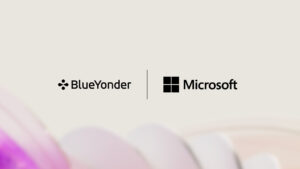Five reasons health organizations are embracing cloud analytics
According to a study by MIT Sloan School of Management, top-performing organizations are three times more likely than lower performers to be sophisticated users of analytics, and twice as likely to say that their use of analytics is a competitive differentiator. No surprise then that health organizations are increasingly turning to analytics to help them improve performance and tackle the many challenges they face-from caring for more patients with limited resources, to complying with stricter regulations for reimbursement, to improving processes across the board.
What’s more, health leaders are finding that today’s cloud analytics solutions enable them to democratize data and empower staff with actionable insights in ways never before possible. In the coming weeks, we’ll share real-world examples of how health organizations like yours are doing just that. We’ll also help you map out your cloud analytics journey. And to kick off this blog series, here are the top reasons we’re seeing health organizations embrace cloud analytics:
Access to any data, anywhere: The cloud makes it easier to connect data across infrastructural boundaries-and analyze that combined data from anywhere. You can connect publicly available big data with your own internal data to uncover new insights that can help you improve clinical outcomes. For example, cloud analytics could help a physician merge a cancer patient’s history and diagnosis with clinical data analysis from the cancer institute as a way to explore the most effective treatment options.
Self-service, mobile insights: Health professionals want to be able to find answers to their research questions and gain insight from anywhere, without having to ask a data analyst. Cloud analytics makes that easier than ever. Using self-service tools on mobile devices, clinicians and managers can easily look at the right data analysis for their specific role to help them make the best decision when and where they need to.
Real-time analysis: The cloud is ideal for real-time analysis. Time delays in accessing data are virtually eliminated.
Scalability for faster time-to-value: With the cloud, you can get the right analytics tools into the hands of the right people faster than ever because you don’t have to wait for internal infrastructure to be set up. It’s easy to deliver new applications to a broad set of staff members, and to scale up or down quickly-adding or subtracting users and capabilities based on your evolving needs.
Reduced costs: Pricing models for cloud computing often enable health organizations to deliver analytic insights to more health professionals at lower costs than traditional deployment of BI solutions. Your organization can pay for what it needs instead of paying upfront for hardware, software, and services that are internally managed. In other words, you don’t have to make the large initial investment in infrastructure that has been required in the past to implement analytics solutions. By taking advantage of pay-as-you-go pricing, you can shift the financial model from large capital expenditures to predictable operating expenses.
Stay tuned for my next blog on charting your course to cloud analytics. In the meantime, please let us know if you have any questions or thoughts via email, Facebook, or Twitter.




